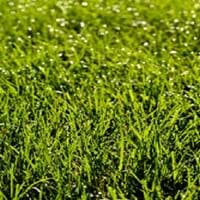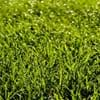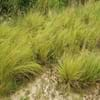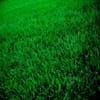Life Span
Perennial
Perennial
Type
Grass
Flowering Plants, Fruits, Trees
Origin
Southern Asia, India
Anatolia, Asia, Europe, Iran, Maghreb, Morocco, Norway, The Hiamalayas
Types
Not Available
Flowering Cherries, Sour Cherries, Sand Cherries, Sweet Cherries, Capulin Cherries
Habitat
Warmer regions
Forest edges, Wild, Woods
USDA Hardiness Zone
6-11
4-8
Sunset Zone
H1, H2, 5, 6, 7, 8, 9, 10, 12, 13, 14, 15, 16, 17, 18, 19, 20, 21, 22, 23, 24
4, 5, 6, 7, 15, 16, 17
Habit
Mat-forming
Upright/Erect
Flower Color
Not Available
White
Flower Color Modifier
Bicolor
Not Available
Fruit Color
Not Available
Red
Leaf Color in Spring
Gray Green, Dark Green
Dark Green
Leaf Color in Summer
Light Green
Orange
Leaf Color in Fall
Gray Green, Dark Green
Orange
Leaf Color in Winter
Gray Green, Dark Green, Tan
Orange
Leaf Shape
Arrowhead
Oblong
Plant Season
Spring, Summer, Fall, Winter
Spring, Summer
Sunlight
Full Sun
Full Sun, Partial shade
Type of Soil
Clay, Loam, Sand
Loamy, Well drained
The pH of Soil
Acidic, Neutral, Alkaline
Slightly Acidic
Soil Drainage
Well drained
Average
Bloom Time
Indeterminate
Early Spring, Spring
Tolerances
Pollution, Salt, Soil Compaction
Heat And Humidity, Not Available
Where to Plant?
Container, Ground
Ground
How to Plant?
Seedlings
Grafting, Seedlings, Transplanting
Plant Maintenance
Medium
Medium
Watering Requirements
Average Water Needs
Never Over-water, Over-watering can cause leaf problems or root diseases, Prefer drip-irrigation instead of Over-head watering, Water twice a day in the initial period
In Summer
Lots of watering
Lots of watering
In Spring
Moderate
Moderate
In Winter
Average Water
Average Water
Soil pH
Acidic, Neutral, Alkaline
Slightly Acidic
Soil Type
Clay, Loam, Sand
Loamy, Well drained
Soil Drainage Capacity
Well drained
Average
Sun Exposure
Full Sun
Full Sun, Partial shade
Pruning
Not Available
Don't prune in the fall, Prune if you want to improve plant shape, Prune in late winter, Remove dead or diseased plant parts, Remove deadheads
Fertilizers
Apply 3-1-2 or 4-1-2 ratio, Nitrogen
All-Purpose Liquid Fertilizer
Pests and Diseases
Red blotch
Aphids, Bacterial Canker, Black Knot, Brown Rot, Caterpillars
Plant Tolerance
Pollution, Salt, Soil Compaction
Drought
Flowers
Insignificant
Yes
Flower Petal Number
Single
Not Available
Foliage Texture
Fine
Not Available
Foliage Sheen
Matte
Not Available
Attracts
Flying insects, Insects
Birds
Allergy
breathing problems, Eye irritation, Hives, Itchiness, Runny nose, sneezing, Throat itching, Whooping Cough
Swelling in the face
Aesthetic Uses
Ground Cover, Landscape Designing
Showy Purposes
Beauty Benefits
Skin irritation, Skin Problems
Not Available
Edible Uses
Insignificant
Yes
Environmental Uses
Air purification, Prevent Soil Erosion, soil stabilisation
Air purification
Medicinal Uses
Cures constipation, Cures foot fissures, Digestive disorders, Eliminate toxins, Fatigue, Halitosis, Improves Breast milk production, Increase red blood cells, Insomnia
Arthritis, Gout, Kidney problems, Rheumatoid arthritis, Swelling
Part of Plant Used
Leaves, Stem
Flowers, Fruits
Other Uses
Animal Feed, Cattle Fodder, Used as Ornamental plant
Wood is used for making furniture
Used As Indoor Plant
Insignificant
No
Used As Outdoor Plant
Yes
Yes
Garden Design
Lawns and Turf
Not Available
Botanical Name
CYNODON dactylon
Prunus avium
Common Name
Bermuda Grass
Cherry Tree
In Hindi
बरमूडा घास
चेरी का पेड़
In German
Bermuda Gras
Kirschbaum
In French
l'herbe des Bermudes
Cerisier
In Portuguese
grama Bermuda
árvore de cereja
In Polish
Trawa Bermuda
wiśniowe drzewo
In Latin
Bermuda Grass
Cherry
Phylum
Magnoliophyta
Magnoliophyta
Class
Liliopsida
Magnoliopsida
Genus
Cynodon Rich
Prunus
Clade
Angiosperms, Commelinids
Angiosperms, Eudicots, Rosids
Tribe
Chlorideae
Not Available
Subfamily
Chloridoideae
Not Available
Number of Species
Not Available
Importance of Bermuda Grass and Cherry Tree
Want to have the most appropriate plant for your garden? You might want to know the importance of Bermuda Grass and Cherry Tree. Basically, these two plants vary in many aspects. Compare Bermuda Grass and Cherry Tree as they differ in many characteristics such as their life, care, benefits, facts, etc. Every gardener must at least have the slightest clue about the plants he wants to plant in his garden. Compare their benefits, which differ in many ways like facts and uses. The medicinal use of Bermuda Grass is Cures constipation, Cures foot fissures, Digestive disorders, Eliminate toxins, Fatigue, Halitosis, Improves Breast milk production, Increase red blood cells and Insomnia whereas of Cherry Tree is Arthritis, Gout, Kidney problems, Rheumatoid arthritis and Swelling. Bermuda Grass has beauty benefits as follows: Skin irritation and Skin Problems while Cherry Tree has beauty benefits as follows: Skin irritation and Skin Problems.
Compare Facts of Bermuda Grass vs Cherry Tree
How to choose the best garden plant for your garden depending upon its facts? Here garden plant comparison will help you to solve this query. Compare the facts of Bermuda Grass vs Cherry Tree and know which one to choose. As garden plants have benefits and other uses, allergy is also a major drawback of plants for some people. Allergic reactions of Bermuda Grass are breathing problems, Eye irritation, Hives, Itchiness, Runny nose, sneezing, Throat itching and Whooping Cough whereas of Cherry Tree have Swelling in the face respectively. Having a fruit bearing plant in your garden can be a plus point of your garden. Bermuda Grass has no showy fruits and Cherry Tree has showy fruits. Also Bermuda Grass is not flowering and Cherry Tree is flowering. You can compare Bermuda Grass and Cherry Tree facts and facts of other plants too.





